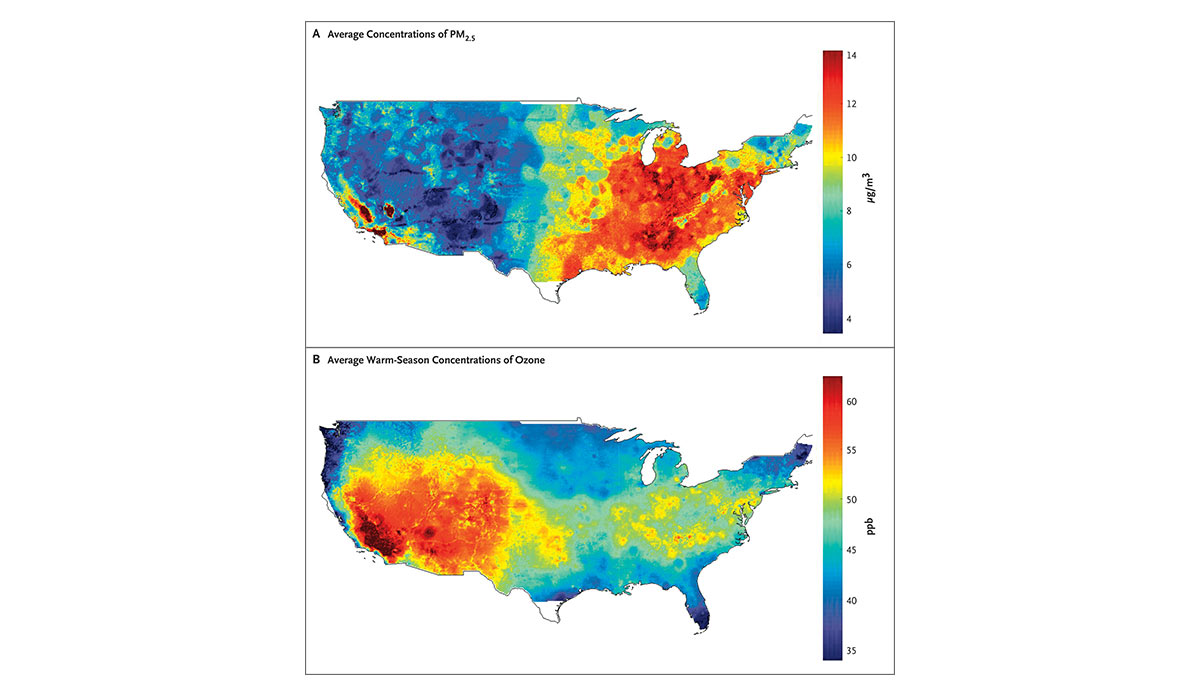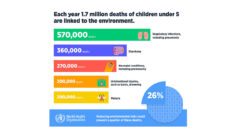The days of U.S. cities with heavy smog – so thick you could wipe the grime off your windowsills – are behind us. Laws such as the Clean Air Act (CAA), signed in 1970, resulted in a drastic reduction in air pollution. Emissions have decreased by 50% since then.
Despite these advances, adverse health effects associated with long-term exposure to air pollution continue. Qian Di and colleagues from Harvard T.H Chan School of Public Health examined the health effects in a nationwide cohort of 61 million Medicare beneficiaries from 2000 to 2012. The researchers created maps like the one above by linking Medicare mortality data, zip codes, and previously published estimates of ozone and fine particle pollutants (PM2.5).
People living in the areas marked by dark red on the map faced the highest levels of long-term exposure to pollutants. California, for instance, had high rates of both pollutants. But Di and colleagues found that long-term exposures to fine particle pollutants and ozone, even at levels below current nationally “acceptable” standards, were associated with an increased risk of death. Persons with low incomes showed the highest risks associated with exposures.
Vast improvements in air quality have been made in the past decades in the U.S., but this study shows that air quality adhering to National Ambient Air Quality Standards still exposes Americans to levels of pollution that can be lethal over many years of exposure. Air quality standards must be revisited in order to alleviate the burden on the most vulnerable populations.
Databyte via Qian Di et al., Air Pollution and Mortality in the Medicare Population. The New England Journal of Medicine.













